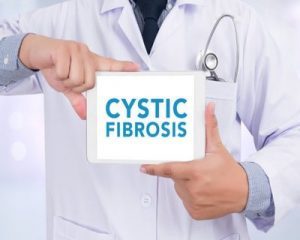- Home
- Editorial
- News
- Practice Guidelines
- Anesthesiology Guidelines
- Cancer Guidelines
- Cardiac Sciences Guidelines
- Critical Care Guidelines
- Dentistry Guidelines
- Dermatology Guidelines
- Diabetes and Endo Guidelines
- Diagnostics Guidelines
- ENT Guidelines
- Featured Practice Guidelines
- Gastroenterology Guidelines
- Geriatrics Guidelines
- Medicine Guidelines
- Nephrology Guidelines
- Neurosciences Guidelines
- Obs and Gynae Guidelines
- Ophthalmology Guidelines
- Orthopaedics Guidelines
- Paediatrics Guidelines
- Psychiatry Guidelines
- Pulmonology Guidelines
- Radiology Guidelines
- Surgery Guidelines
- Urology Guidelines
Cystic fibrosis: Interactions between bacteria that infect lungs uncovered

Substances produced by a harmful bacterium in the lungs of cystic fibrosis patients may enhance the growth of other bacteria that, in turn, inhibit the harmful bacterium's bio-film, according to new research published in PLOS Pathogens.
Most people with cystic fibrosis develop lung infections that involve multiple species of microbes. These microbes adhere to each other and to the walls of the airway in structures known as bio-films. A bio-film bacterium known as Pseudomonas aeruginosa can cause devastating symptoms, but recent studies suggest that other bacteria known as streptococci might inhibit P. aeruginosa and improve lung function.
To better understand the role of streptococci in cystic fibrosis, Jessica Scoffield of the University of Alabama at Birmingham and colleagues grew several biofilms in dishes and in fruit flies. Each biofilm consisted of a P. aeruginosa strain and a streptococcus strain. The researchers used molecular and microscopy techniques to observe interactions between the bacteria.
The scientists found that a carbohydrate substance known as alginate, produced by a particular strain of P. aeruginosa known as FRD1, promotes the biofilm of the streptococcus species Streptococcus parasanguinis. At the same time, biofilm formation by S. parasanguinis restricts biofilm formation by P. aeruginosa in line with previous studies.
The team also found evidence that molecules known as adhesins, which are produced by S. parasanguinis, play an important role in this process. Adhesins help cells stick together in a biofilm or attach to surfaces, and they appear to be necessary for enhanced biofilm formation by S. parasanguinis in the presence of alginate.
These findings suggest a potential mechanism by which S. parasanguinis, which is normally found on the surface of teeth, might colonize the lungs of a cystic fibrosis patient and inhibit P. aeruginosa. Further studies of this interaction could provide clues for the development of new treatments to combat P. aeruginosa infection.
You can read the full Article by clicking on the link :
Scoffield JA, Duan D, Zhu F, Wu H. A commensal streptococcus hijacks a Pseudomonas aeruginosa exopolysaccharide to promote biofilm formation. PLoS Pathog, April 2017 DOI: 10.1371/journal.ppat.1006300

Disclaimer: This site is primarily intended for healthcare professionals. Any content/information on this website does not replace the advice of medical and/or health professionals and should not be construed as medical/diagnostic advice/endorsement or prescription. Use of this site is subject to our terms of use, privacy policy, advertisement policy. © 2020 Minerva Medical Treatment Pvt Ltd